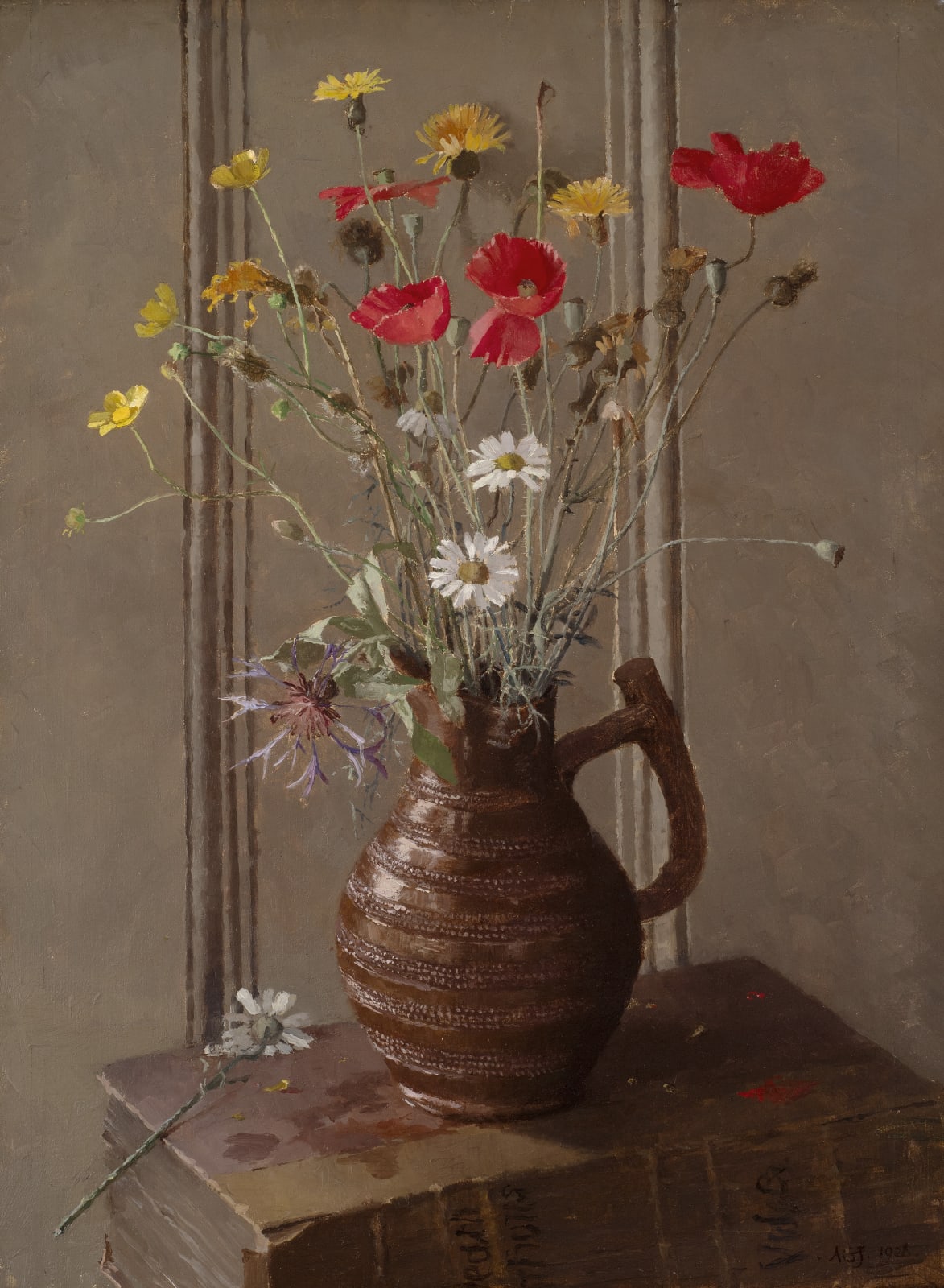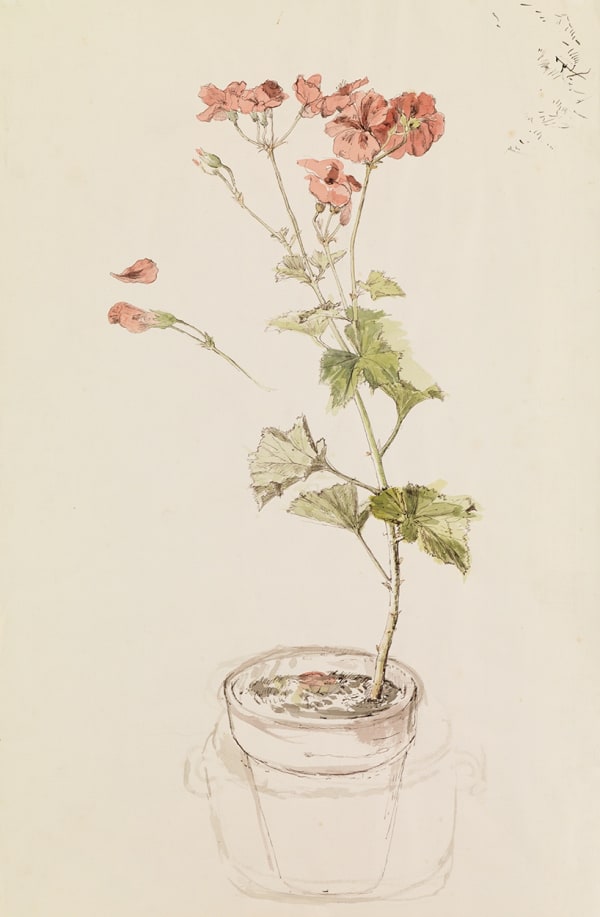Allan Gwynne-Jones (1892-1982)
Provenance
Francis Henry Crittall, 1928
Exhibitions
New English Art Club, 1928, no 63
In Gwynne-Jones’s book Introduction to Still-Life (1954, pp 20-22) he quoted the distinguished Dutch art historian JG van Gelder:
That in the 15th century "… the custom so natural to us of using flowers as a decoration in the house was unknown, and there is no trace of them in painted interiors without the element of symbolical significance .…" I must confess that when I read this first I received a shock. In the Middle Ages the love of flowers is manifest. When one looks at the flowers so sensitively painted in the borders of manuscripts … and remembers the loving references to flowers in poems and mediaeval romances … – with these in mind is it not very difficult (for me it is quite impossible) to believe that no girl ever picked a handful of flowers and stuck them in a jar by her bedside? .… In the pictures of the late 16th and early 17th centuries, each flower is painted with the maximum exactitude. It is only gradually that the idea of a flower-piece becoming more than a collection of carefully balanced and beautifully painted separate blooms gives way to the conception of flowers seen as bound together by a common light.
In his own paintings, Gwynne-Jones carefully composed wild grasses and flowers from his own garden or from the wayside, often in humble receptacles, preferring them to cultivated flowers, and lit them in subdued and subtle manner. This example is one of his most sensitive early works, exhibited in the New English Art Club in 1928 where it drew the critic of the Liverpool Daily Post to call it ‘outstandingly good’. It was bought by Francis Crittall, the windows manufacturer, who had been painted by Augustus John and whose son was a painter. Gwynne-Jones taught most of the East Kent School of painters (whose work the Maas Gallery has championed) at the Royal College of Art. John Ward in particular admired him greatly and they remained close. After John Sergeant had his first exhibition at the Maas Gallery, instead of taking a cheque for his share, he asked us to offer the money to Agnew’s for an early still-life by Gwynne-Jones which was priced at more – and so, with a little accommodation, the deal was done, and Sergeant was paid for several years of hard work, not with money, but with a picture by one of his heroes.
Gwynne-Jones’s obituarist in The Times noted: ‘Perhaps his vein of tender lyricism was most apparent in his paintings of flowers and still life .... Such works, while entirely personal in vision, echo the refinement of Chardin.’
-
 Roy Hobdell (1911-1961)Still-Life: Iris, Narcissus, Tulips and Convolvulus, with MothsPOA
Roy Hobdell (1911-1961)Still-Life: Iris, Narcissus, Tulips and Convolvulus, with MothsPOA -
 John Sergeant (1937-2010)Study for the cover of 'The Island' by Gustav Herling£1,200
John Sergeant (1937-2010)Study for the cover of 'The Island' by Gustav Herling£1,200 -
 John Sergeant (1937-2010)Geranium£1,600
John Sergeant (1937-2010)Geranium£1,600 -
 John Ward (1917-2007)Flowers in a Vase£2,800
John Ward (1917-2007)Flowers in a Vase£2,800 -
 John Ward (1917-2007)Postcard and Paintbox£2,400
John Ward (1917-2007)Postcard and Paintbox£2,400 -
 John Ward (1917-2007)Postcard and Flower£1,800
John Ward (1917-2007)Postcard and Flower£1,800 -
 Maxwell Ashby Armfield (1882-1972)A Pair of Still Lifes: Roses and Carnations£3,800
Maxwell Ashby Armfield (1882-1972)A Pair of Still Lifes: Roses and Carnations£3,800 -
 Allan Gwynne-Jones (1892-1982)Tulips, Irises and DaisiesPOA
Allan Gwynne-Jones (1892-1982)Tulips, Irises and DaisiesPOA -
 Arthur Coryndon Hansler Luxmoore (1842-1891)Short Commons£2,800
Arthur Coryndon Hansler Luxmoore (1842-1891)Short Commons£2,800 -
 Maxwell Ashby Armfield (1882-1972)Grape Vines and Jug£6,200
Maxwell Ashby Armfield (1882-1972)Grape Vines and Jug£6,200
The Maas Gallery, 6 Duke Street, St. James's, London, SW1Y 6BN
+44 (0) 20 7930 9511 | mail@maasgallery.com
This website uses cookies
This site uses cookies to help make it more useful to you. Please contact us to find out more about our Cookie Policy.













